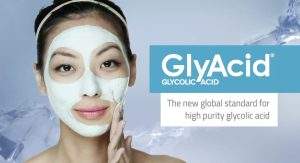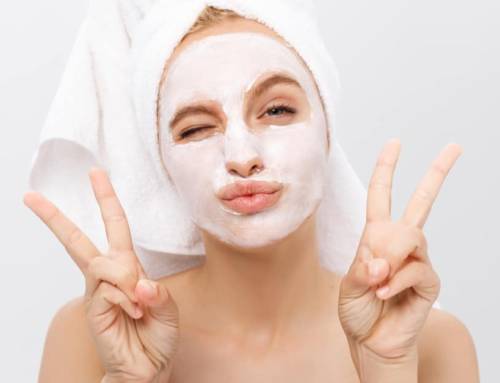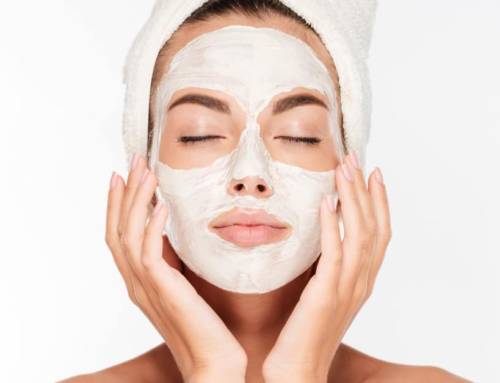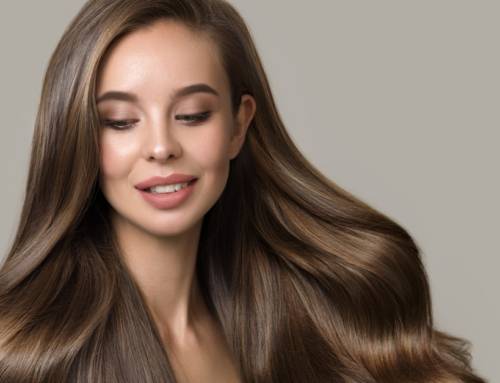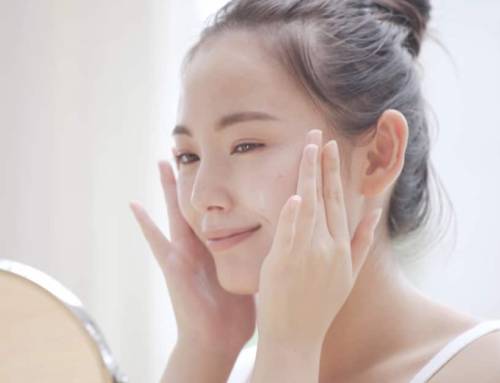8 Huge Beauty & Personal Care Trends for 2018
2017 was an extremely innovative and exciting year in the beauty, skincare, and personal care world, as manufacturers offered consumers exciting new products, technologies, and benefits that highlighted a host of innovations.
If you think that’s going to slow down in the New Year ahead, you’re better think again.
The personal care product landscape for 2018 looks to be even more exciting, as consumer demand for everything from personalized products to bio-hacking, will pave the way for producers to create revolutionary new products and revitalize old favorites.
Curious about the personal care predictions for 2018? Here are the eight biggest trends on the horizon for 2018:
The personal care product landscape for 2018 looks to be even more exciting...
J-Beauty becomes the new K-Beauty
Korean skincare products saw a staggering surge in popularity in 2017. But what will be the new K-Beauty of 2018?
Japanese beauty products, or J-Beauty products, aimed at correcting facial, body, nail, and hair consumer woes.
Although Korean-beauty influenced products (sheet masks, highly texturized products, glowing skin promises) won’t fall out of popularity anytime soon, Japanese beauty products will soon take the foreground.
“So much of what is exciting in K-beauty originally stemmed from Japan,” explains Anna-Marie Solowij, former British Vogue beauty director and co-founder of niche retailer Beauty Mart, said in a recent interview. “With a struggling economy and South Korea investing in beauty R&D, K-beauty stole the limelight. Now, with Japan’s economy recovering, it will reassert itself.”
Japanese beauty products typically take a minimalistic approach, and focus on principles like simplicity and ease. This coming J-Beauty trend will lead to a boost in the use of multipurpose skincare ingredients that deliver a range of benefits, like glycolic acid – which is excellent at slowing aging, quick exfoliation and moisturization, and treating acne.
Simplification of routines
While 2017 brought about the highly popularized idea of multi-step skincare routines, 2018 looks to be a simpler, more easily effective skincare landscape.
Why the slimdown on routines and product? Consumers want more time and ease! This simplification trend will have consumers looking for multi-beneficial products that can deliver an array of positive effects with a single application or use. For both skin care and personal care product manufacturers, this means powerhouse ingredients like glycolic acid will be a crowd-pleasing addition to both tried-and-true and new formulations.
Glycolic acid can be used for everything from erasing the appearance of wrinkles and fine lines to reducing acne breakouts on the face and body, which makes it the perfect addition to a simplified skincare routine. As consumers look for more bang for their buck in their 2018 products, glycolic acid will be a welcomed and sought-after addition to products like cleansers, toners, exfoliators, lotions, and even shampoos.
The Meghan Markle effect
People around the world cheered when Prince Harry and former actress Meghan Markle announced their engagement this November. What happened even faster than the global excitement about an upcoming royal wedding? The Meghan Markle Effect – the theory that everything Meghan Markle touches becomes instantly coveted – took hold, almost immediately.
Handbags and coats Markle has worn at her public appearances have sold out in minutes, and experts are predicting the Meghan Markle Effect will steer the 2018 beauty and skincare trends. Markle’s renowned by major media outlets for her luminous skin, and experts forecast that millions of consumers will be trying to copy her enviable glow in 2018.
In 2018, the consumer seeking Markle’s “radiant” skin for their own complexion will focus on finding and purchasing skincare products that promote health, vitality, and glow. Like we’ve already said, personal care products that use glycolic acid, a heavyweight AHA for producing fresh, dewy skin, will no doubt become the It Product of 2018, as the Meghan Markle Effect touches the personal care world, from head to toe.
“Natural” makes way for “clean”
Another new consumer demand for 2018 will resoundingly be for products labeled “clean,” not “natural,” according to reports. What exactly does clean mean? For consumers, “clean” means a personal care product free of harmful chemicals, parabens, sulfates, or silicones which could potentially disrupt their health.
As product purchasers become more savvy, and turn a calculating eye on their skincare and personal care product labels, ingredients like glycolic acid will be a key additive for new formulations or re-branding of old favorites in 2018. Why the focus on glycolic acid.
Glycolic acid has not only been deemed safe for consumer use by the American Dermatology Association, GA has also been crowned by doctors as an extremely effective ingredient to fight aging and acne. In 2018 “clean” will be at the top off consumer’s concerns – but efficacy will be right behind it.
Bio-hacking for beauty and wellness
Bio-hacking, or exploring human biology and finding ways to exploit certain practices or ingredients for increased health and wellness, is expected to be a rising trend for beauty in 2018. Bio-hacking is a fairly new practice, and until recently has focused on creating mental boosts or rapid athletic growth. That’s all about to change as consumers turn their bio-hacking tricks on their beauty and personal wellness.
“At Bulletproof, we talk about hacking brain fog, infertility, and obesity. Why not hack your attractiveness, too? Your skin says a lot about your overall health and vitality,” wrote the staff at the influential bio-hacking Bulletproof blog at the end of this year.
Using uber-potent ingredients like glycolic acid to quickly hack their way to smooth, healthy, and acne-free skin will be the wave of the future for consumers who want to obtain their very best-looking, best-feeling skin – right now!
Anti-Pollution Skincare
Anti-pollution skincare products have been trending in Asian markets for some time now, but 2017 saw a real boost in their use in Western consumption. The anti-pollution skincare market is now valued at $5.2 billion USD and grew 30% in the first six months of the year, according to research from NPD.
Experts predict the anti-pollution skincare product market will continue to experience big growth in 2018, as consumers seek out more products that protect the face and body from UV rays, smog, chemicals, dust, dirt and more environmental pollutants.
Glycolic acid is already a popular component of many current hit anti-pollution products like the F.O.Y. Microdermabrasion Exfoliator, DERMADoctor Wrinkle Revenge Antioxidant Enhanced Glycolic Acid Facial Wash, and Clarins Multi-Active Day Cream-Gel and will continue to be a central component of the anti-pollution product movement.
What will the hottest anti-pollution product be in 2018? Anti-pollution sheet masks are expected to skyrocket in popularity in 2018, as the product experienced 112% growth in 2017, according to market data from the summer.
Body masks become the new face masks
Facial masks – both sheet and rub on applications – rode the tidal wave of consumer favoritism all of 2017, thanks to the appeal of posting masked selfies on social media. (There are currently over 1.4 million #facemask photos on Instagram!) But the mask trend revamped for 2018 looks a little different. Rather than just facial masks, masks for other parts of the body like feet, hands, chest, knees, and elbows, will reign supreme.
Glycolic acid, already a praised component of a variety of facial masks (acne, vibrancy, wrinkle-reducing), will be the perfect ingredient to add to the onslaught of body masks headed our way in 2018.
Glycolic acid, with its dry-skin fighting capabilities and rapid exfoliation properties, will be the best way for consumers to slough off dead, dry skin from the notoriously rough patches on the body – elbows, knees, and feet – and enjoy the body mask trend.
Customization rules!
The key word for personal care products in 2018? Bespoke. Customized, personalized, and individualized skincare, haircare, and products for the body are all going to see a huge spike in consumer interest, according to new research from Mintel.
The makeup industry has led the charge on customized products, offering everything from personalized mascara from Eyeko to Rhianna’s Fenty Makeup line, featuring 40 different foundation shades. In 2018, personal care and skin care producers will follow the bespoke trend as well, and turn the spotlight on individual customers with products that offer a unique experience.
“We’ll see that the brands going deeper are personalized…brands are realizing they must connect intimately with the customer, and that only happens through personalized experience and an authentic, thoughtful exchange,” said Rachel Roberts, CEO of Oyl + Water.
The benefit of incorporating multi-use ingredients into product formulations is clear for 2018. Multi-beneficial ingredients like glycolic acid are powerhouses for manufacturers, as GA can be added to a wide range of products for a massive variety of claims. Whether it’s for treating blackheads, erasing fine lines, or revealing smooth, moisturized skin glycolic acid is the perfect ingredient for the personalized product revolution headed our way in 2018.
So, the 2018 personal care product landscape is bright with possibilities for consumers to find their next favorite product, and for formulators and manufacturers to use their most innovative ideas, ingredients and technologies to offer the results consumers are craving. It’s a cycle that shows no sign of slowing down.


